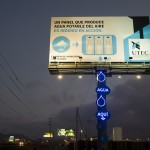 The congestion charge here in London was first rolled out 11 years ago. Whilst a big part of the project aimed to reduce traffic congestion in the city centre, there was also a strong environmental aim, with then mayor Ken Livingstone hoping that the scheme would eventually reduce air pollution in the city. His administration had hoped to implement charging based upon the co2 footprint of the vehicle in the run up to the 2008 mayoral election. When Livingstone was defeated in that election however, so to was the project, with new mayor Boris Johnson quietly scrapping the proposal.
The congestion charge here in London was first rolled out 11 years ago. Whilst a big part of the project aimed to reduce traffic congestion in the city centre, there was also a strong environmental aim, with then mayor Ken Livingstone hoping that the scheme would eventually reduce air pollution in the city. His administration had hoped to implement charging based upon the co2 footprint of the vehicle in the run up to the 2008 mayoral election. When Livingstone was defeated in that election however, so to was the project, with new mayor Boris Johnson quietly scrapping the proposal.
Central to the decision to scrap the project was a report by King’s College London saying that whilst the plan might reduce emissions in central London by a small amount, it would increase emissions in outer London by an awful lot more.
The issue reminds us of the prickly topic of air quality in our cities. The UN Environment Programme suggests that as many as 1 million premature deaths a year are linked to urban air pollution. Despite the backtracking of Transport for London in implementing a co2 linked traffic charge, most developing countries have done alright on air quality, due in large part to significantly greener vehicles.
The developing world however is often not so fortunate, so a new project launched recently by the University of Engineering and Technology in Peru is of particular interest. The university have created a billboard that claims to purify the air around it.
Lima is already a city with heavy air pollution issues, but with building work being done on a new university campus, the area is heavily polluted. Thus, the university decided to put their brains to the task and come up with the air purifying billboard that they claim will have the same impact as a 1,200 tree forest.
The billboard features low-power equipment that sucks in polluted air from the surrounding environment, before filtering the air through water and then pumping it back out into the local environment. It’s a pretty neat project from an organization with form in this area, as previously they created a billboard that captured humidity from the air and turned it into drinkable water.
With most cities hosting a wide number of advertising billboards however, maybe this is one feature that could soon be seen throughout the world.
That's a pretty cool project. Thanks for sharing.
Love the idea Adi. I spent 2 weeks in Lima last year. They can use a nice infusion of green-ness, similar to a place like Costa Rica. Thanks dude!
Yeah I thought it was quite novel. Hopefully it's cost effective enough to spread to other billboards too.
What a fantastic idea. I wonder how much it costs to build?
I love hearing about things like this. Why can't it ever happen in London??
Dare say that cost would be involved somewhere.